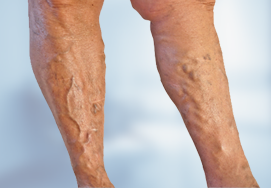Non Healing Wounds
Non-Healing wounds or Chronic wounds are described as wounds that do not heal in a predictable amount of time that other wounds do. It creates physical and emotional stress.

- What is a non-healing wound?
-
Why should I be concerned about a wound
that is not healing? - What are the Symptoms of an infected wound
-
What are the common diagnostic tests
used for chronic non healing wounds - How are chronic non healing wounds treated
- DEFINITIVE WOUND COVERAGE
- what is post operative care ?
What is a non-healing wound?
A non-healing or chronic wound is defined as a wound that does not improve after four weeks or does not heal in eight weeks. These include:
- Diabetic foot ulcers*
- Venous-related ulcerations
- Non-healing surgical wounds
- Pressure ulcers
- Wounds related to metabolic disease
- Wounds that repeatedly break down – unstable scarring
Why should I be concerned about a wound that is not healing?
Infection is the greatest risk from non-healing wounds. Each of us is exposed every day to common bacteria such as staphylococcus and pseudomonas. These bacteria are present on our skin and in the environment around us. They don’t present a problem when we are healthy and wound free. But an open wound increases the risk for infection, which can lead to serious conditions, even the loss of a limb.
Chronic wounds have risk of developing skin cancer if left untreated for years.
What are the Symptoms of an infected wound
Symptoms that may indicate an infection include:
- Increasing pain
- Redness and warmth around the wound
- “Oozing” from the wound
- An odor coming from the wound
What are the common diagnostic tests used for chronic non healing wounds
- Blood investigations
- For anaemia
- Diabetes
- Colour Doppler – arterial and venous
- Radiographs or X – rays
- Wound Bipsy
- Nerve conduction tests
How are chronic non healing wounds treated
The treatment is often determined by the cause. Various methods exist to ameliorate these problems, including antibiotic and antibacterial use, debridement, irrigation, vacuum-assisted closure, moist wound healing, removing mechanical stress, Skin Grafting and flap coverage
DECREASING INFECTION AND PROMOTING WOUND IMPROVEMENT
- Local antibiotics
To lower the bacterial count in wounds, topical antibiotics are used, which kill bacteria and can also help by keeping the wound environment moist - Surgical debridement
A greater amount of exudate and necrotic tissue in a wound increases likelihood of infection byserving as a medium for bacterial growth away from the host’s defenses. Since bacteria thrive on dead tissue, wounds are often surgically debrided to remove the devitalized tissue and infected tissues till healthy vascularised tissues. It achieves immediate and early control of wound infection and early wound improvement
It is a intermediate step towards definitive skin grafting or flap coverage - Negative pressure wound therapy
Negative pressure wound therapy (NPWT) is a treatment that improves ischemic tissues and removes wound fluid used by bacteria. This therapy, also known as vacuum-assisted closure, reduces swelling in tissues, which brings more blood and nutrients to the area, as does the negative pressure itself. It is a intermediate step towards definitive skin grafting or flap coverage - Maggot therapy
Removing necrotic or devitalized tissue is also the aim of maggot therapy, the intentional introduction by a health care practitioner of live, disinfected maggots into non-healing wounds. Maggots dissolve only necrotic, infected tissue; disinfect the wound by killing bacteria; and stimulate wound healing. Maggot therapy has been shown to accelerate debridement of necrotic wounds and reduce the bacterial load of the wound, leading to earlier healing, reduced wound odour and less pain. The combination and interactions of these actions make maggots an extremely potent tool in chronic wound care.. It is a intermediate step towards definitive skin grafting or flap coverage
DEFINITIVE WOUND COVERAGE
Larger Wounds do not heal spontaneously as they do not have dermal appendages necessary for completion of good wound healing. So they require definitive plastic surgical help to heal
If they do manage to heal
- Large wounds heal by scar contraction, Not by regeneration. That is by pulling surrounding skin towards itself. If this happens near a joint Then joint motion is compromised due to scar contracture – often seen in burn wounds.
- Ustable Scarring
They repeatedly breakdown into ulceration – as these scars tend to be immature and unable to withstand normal physiological stresses placed by the environment
Skin grafting – it helps In covering large non healing wounds and acts as a definitive stable wound coverage, but it requires local conditions in the wound to be improved enough to accept a skin graft. – i.e. adequate red granulation tissue , skin grafts can undergo secondary contraction. So they require splinting and some care in the early phases of maturation.
Flap coverage it also helps in coverage of non healing wounds and acts as a definitive stable wound coverage . it carries its own blood supply and does not require granulation tissue to be present in the wound, helps in coverage of vital structures and is not subjected to wound contraction later, does not require any splitting.
what is post operative care ?
- You will require to come for regular check ups
- Limb elevation will be required till the graft or flap is stable
- Pressure garments will be required to reduce oedema and help the flap and graft to get contoured.
- Massage of skin graft and flaps help them to mature satisfactorily.








